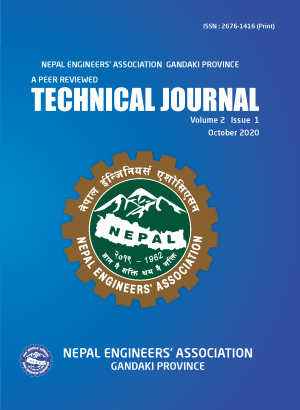Impact Analysis of 220 Kv And 400 Kv Transmission Lines on The Integrated Nepal Power System
DOI:
https://doi.org/10.3126/tj.v2i1.32842Keywords:
ETAP, Grid, INPS, Load Flow, Optimal Capacitor Placement, Power lossAbstract
Power is an essential requirement for the economic development of any country. To maintain the generation of electric power at an adequate level the power has to be transmitted in a proper form to the consumer. For determination of line losses, voltage profiles and expansion of system, load flow analysis is most essential tools. This paper deals with the impact analysis of new 220 kV and 400 kV lines on Interconnected Nepal Power System (132 kV grid) in Electrical Transient Analyzer Program (ETAP). It represents the present scenario of the power system of Nepal and their impact analysis. Load flow result of existing 132 kV line shows that there is about 44.56 MW active power losses in the transmission line before any compensation techniques. After the Optimal Capacitor Placement, in the existing transmission line the active power loss decreases to about 34.224 MW as well as the voltage profile at each bus improves. The load flow result of the under construction 220 kV and 400 kV lines on the existing line shows that the total system loss would decrease to about 27.445 MW with the voltage profile improvement. The simulated model, result and analysis are presented in this paper.
Downloads
Downloads
Published
How to Cite
Issue
Section
License
© Technical Journal
Authors are required to transfer their copyright to the journal.




